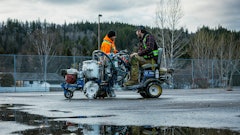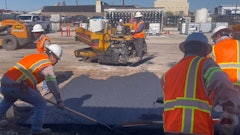What’s the most dreaded -- or should I say most misunderstood -- part of sealcoating? Job Costing. What…? Yes, job costing is usually the most dreaded and misunderstood element of the sealcoating business.
- As an owner, you need to know your numbers. At the recent National Pavement Expo there was a lot of discussion as to “what should I charge?” That’s a question I’ve never liked because each contractor should know their numbers. If they did, they would know what to charge and wouldn't need to rely on others. So I thought I would offer a crash course on basic costing in this column. I hope it will help some contractors – and open the eyes of some others.
What’s the problem? Well, all too often a contractor will score a $10,000 job, but after doing the work let’s say they lost $1,000. The problem is, they don’t realize they lost $1,000 because they collect the check and feel $10,000 richer. Let’s fast forward a few days or a week, and the contractor duplicates the same scenario, again losing $1,000 on a $10,000 job. Now they are in the red $2,000, but feel rich because they have $20,000 in the bank.
This happens all over the country, and to just about every business owner. It happened to me before I learned to properly cost and estimate our jobs. It’s very possible contractors will float this way for years or decades. The problem is, they aren’t building a business; what they are building is a house of cards that could collapse at any time... Not to mention that if you don't know your costs, you aren’t accurately estimating.
So, figuring your costs... how do we do that? Well, first you need to look at your overhead, and this has to be an honest assessment. You need to include and determine the cost of everything that keeps your business in operation. Examples might include rent for your office, lease payments on equipment, utilities, insurance, repair and replacement of your equipment etc. The more detailed you can get the more accurate your costs will be. Then you will want to add in labor and materials for each job.
Let’s walk through an example on a 10,000-sq. ft. job:
10,000 sq. ft. ÷ 35 sq. ft./gal. (an average material yield) = 285.7 gal. needed (we’ll round up to 286)
- Deduct about 20% for water (about 57 gal.) and you’re looking at,
228 gal. total material x $2.50/gal. = $570 material cost
- Let’s assume overhead (rent, lease payments insurance etc.) for this example is $500/day.
- Labor is $850 per day
- Let’s add in 30% profit
$570 Material
+ $500 Overhead
+ $850 Labor per day
________________
$1,920 Subtotal
+ $576 profit @ 30%
____________________
$2,496 Total ÷ 10,000 sq. ft. = .25 per sq. ft.
That’s it! Very simple: .25 per sq. ft. is what you need to charge in this example. Sure you could do it for less profit, but why? And when you know your costs you can alter the profit margin on a job and know in advance what you will earn. As long as you don’t go below cost, you are almost guaranteed success. It’s when you don't account for all of your costs of doing business that you begin to jeopardize your operation and could end up working for less than your cost.
People might account for costs in different categories, but at the end of the day, just making sure you have accounted for the costs that keep your business in operation is more than half the battle.
Let me know if you have questions or ideas for the column. [email protected]


























